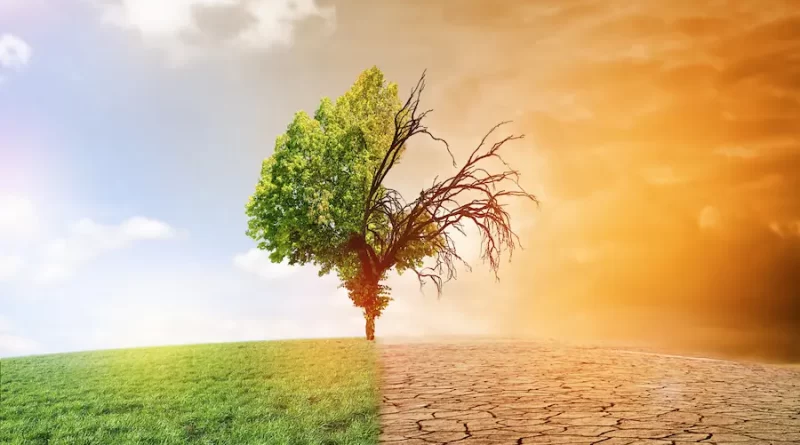Global Warming vs. Climate Change: The Differences Explained
Experts estimate the global average temperature in 2022 to be 1.15° C higher than the 1850 to 1900 average. Thus, it’s one of the warmest years on record.
Both global warming and climate change, in turn, are behind such increasing temperatures.
What exactly is global warming, though, and how does it differ from climate change? Most importantly, how can humans stop such phenomena from worsening?
This guide comparing global warming vs. climate change answers all that and more, so read on.
Global Warming vs. Climate Change: Overview of Differences
Global warming refers to the long-term increases in temperatures worldwide. Temperatures, in turn, are some of the factors that cause climate.
On the other hand, climate change refers to changes in long-term climate measures. These alterations affect temperatures, precipitation, and even wind patterns.
Why Is Global Warming Occurring?
Global warming is mainly due to the increasing levels of greenhouse gases (GHGs).
GHGs are gases that trap heat once they’re in the atmosphere. Examples are carbon dioxide (CO2), ozone (O3), methane (CH4), nitrous oxide (NO2), and water vapor.
Some GHGs are naturally-occurring, such as when plants respirate or decompose. Oceans can also release them into the atmosphere.
Other GHGs are insidious; they’re what we call anthropogenic GHGs.
Anthropogenic GHGs are the chief culprits behind global warming. That’s because there’s now too much of them in the atmosphere. As a result, they trap more heat, and they do so for prolonged periods.
Anthropogenic GHGs come from human activities, primarily from the combustion of fossil fuels.
Fossil fuels, such as coal, natural gas, and oil, store lots of carbon as they form. And because their formation occurs over hundreds of millions of years, they’re non-renewable.
Burning fossil fuels releases a lot of GHGs because of their stored carbon. Humans, in turn, burn them mainly for energy. Indeed, despite them not being renewable, they still supply about 80% of the world’s energy.
Deforestation is another human activity that leads to more GHGs in the atmosphere. That’s because it eliminates trees, which naturally sequester (remove) and store carbon. Thus, fewer trees mean fewer plants help reduce CO2 from the air, so more of this gas stays in the atmosphere.
What About the Causes of Climate Change?
Global warming is one of the leading causes of climate change. Thus, the same things that cause global warming are also behind climate change. These include human activities and the GHG emissions they bring to the atmosphere.
For example, global warming causes the ocean’s temperature to increase. That causes sea ice to melt, leading to rising sea levels. The higher the sea levels are, the more coastal erosion and storm surges occur.
Warming air and increasing ocean air temperatures also create more frequent coastal storms. Even worse, they make these extreme events more intense and severe.
Let’s use the five 1-in-1,000-year flood events in the U.S. that occurred from late July to August 2022. That’s a five-week span in which these floods, with a 0.1% chance of happening, happened. Even scarier is that these incidents occurred following a lengthy hot, dry streak.
The increasingly hot summers also show how global warming is causing climate change.
For instance, summer 2022 in the contiguous U.S. ranked third-warmest on record. Its summer temperature averaged 73.9° F, a whopping 2.5° F higher than the long-term average between 1901 and 2000. However, for Massachusetts, Rhode Island, and Texas, it was the second-warmest since 1895.
Are There Climate Change and Global Warming Solutions?
Yes!
We have many ways to start caring for the planet better and help keep global warming and climate change at bay. To top it off, many eco-friendly tips can also help you reduce energy bills and save money.
Be Energy-Smart
In 2021, 50% of the energy used by the residential sector in the U.S. came directly from fossil fuels. That doesn’t include the percentage of fossil fuel-based electricity they consumed.
Therefore, the more fossil fuel-based energy you use at home, the more GHGs you add to the atmosphere. You can reduce that by switching to energy-efficient appliances, electronics, and systems. These energy-saving products use less energy than non-efficient ones, saving you money, too.
Another effective strategy is to install or improve your home insulation. Doing so can help cut unwanted heat gains and losses that drive up your energy consumption.
Consider investing in a solar energy system if you have a bigger budget. Solar is renewable, unlike fossil fuels, and its carbon emissions are much lower.
Use Alternative Means of Transportation
The U.S. transportation sector accounted for 27% of the country’s total GHG emissions in 2020. That means it was the leading source of anthropogenic GHGs back then. After all, vehicles, from cars to trucks and aircraft, use massive amounts of fossil fuels.
So, as much as possible, walk or bike more instead of driving. If that’s not viable, consider taking public transport, such as a bus or a train.
Support Organizations With Climate Action Plans
A climate action plan is a comprehensive, strategic framework for reducing GHG emissions. It details reduction targets and necessary steps to reach those goals.
One such method that many climate action plans include is using direct air capture (DAC). This technology directly sucks in carbon from the atmosphere and stores it long-term. It’s effective but costly to build, operate, and maintain.
Thus, some direct air capture companies have started contribution programs. They allow people to make monetary contributions to fund and further their cause. They use these donations to construct, operate, and maintain DAC plants.
Another crucial climate action strategy is reforestation. It aims to restore forests by replanting trees in deforested or destroyed areas.
Many charitable organizations worldwide implement reforestation projects. In the U.S., these include the National Forest Foundation, Trees, Water & People, and Tree People. They let donors gift a tree to a loved one or have one planted in their name.
Help Mitigate Global Warming and Climate Change
As you learned in this global warming vs. climate change guide, these two terms aren’t the same. The former refers to rising global temperatures. By contrast, the latter refers to long-term changes caused by global warming.
However, despite their differences, the methods to mitigate them are the same. And fortunately, everyone can contribute to the solution, such as by being energy-smart. Don’t forget that donating to climate action plans can also help.
If you liked this guide, we have more to share, so browse our latest blog posts now!




